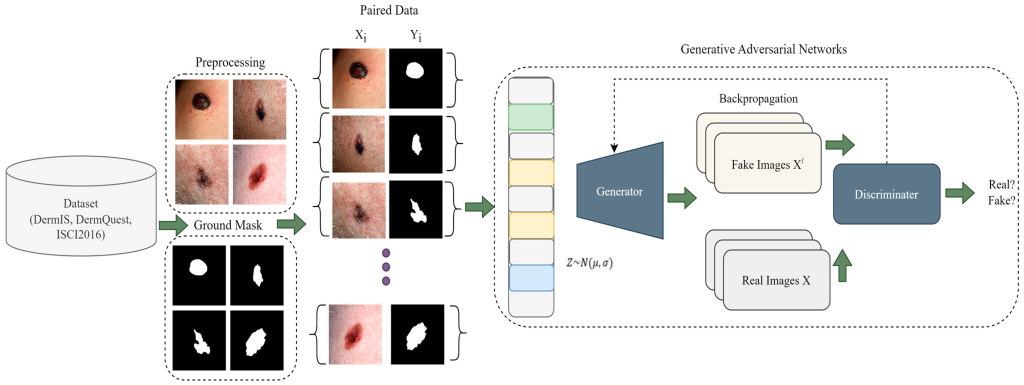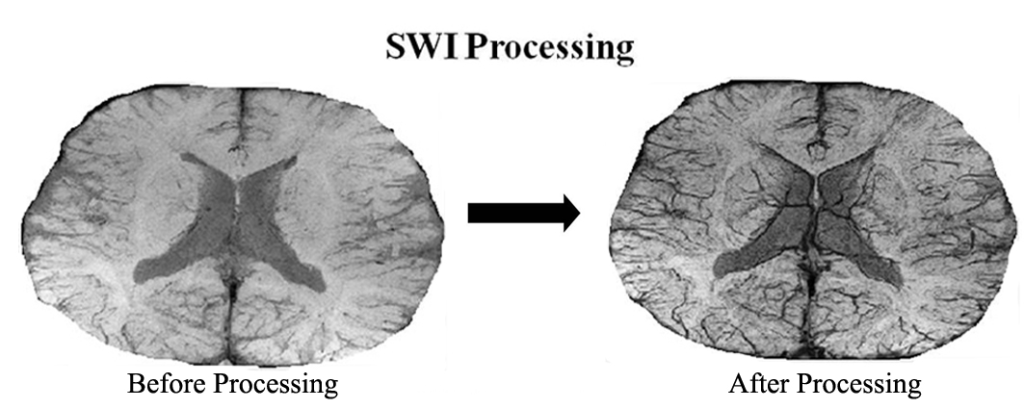Unleashing the Power of Generative AI in Medical Imaging
Medical imaging is an indispensable tool in modern healthcare, aiding in the diagnosis, treatment planning, and monitoring of various medical conditions. From X-rays and CT scans to MRIs and ultrasounds, medical imaging provides valuable insights into the human body. However, the interpretation and analysis of these images can be challenging and time-consuming, requiring specialized expertise. Generative Artificial Intelligence (AI) has emerged as a powerful technology in medical imaging, offering innovative solutions to overcome these challenges.

By leveraging deep learning algorithms and vast amounts of data, generative AI models can generate realistic images, enhance existing images, and even predict disease progression.
Conditional Generative Models

Conditional generative models incorporate additional input variables, such as class labels or disease information, to generate output samples conditioned on specific attributes. These models allow for targeted generation and manipulation of medical images based on specific characteristics or conditions.
Generative AI techniques have found applications beyond medical imaging, such as image synthesis, text-to-image generation, music composition, and video synthesis. These applications demonstrate the versatility and creative potential of generative AI in various domains.
The Role of Generative AI in Medical Imaging

1.Image Generation and Augmentation Generative AI can generate synthetic medical images that closely resemble real patient data. These generated images can be used to augment limited datasets, create diverse training samples, and enhance the robustness and generalization of deep learning models.

2. Image Enhancement and Reconstruction
Generative AI algorithms can enhance the quality of medical images by reducing noise, improving resolution, and enhancing details. Additionally, they can reconstruct missing or incomplete image data, enabling the completion of scans with partial information.

3. Image Segmentation and Annotation Segmentation is a crucial task in medical imaging for identifying and delineating structures of interest, such as organs or tumors. Generative AI can automate the segmentation process, saving time and reducing manual effort. Furthermore, it can generate annotations for training deep learning models, facilitating the development of accurate and efficient algorithms.
4. Disease Detection and Diagnosis
Generative AI models can aid in the automated detection of abnormalities and pathologies in medical images. By learning from large datasets, these models can identify patterns and features indicative of specific diseases, assisting healthcare professionals in the diagnosis process.
5. Predicting Disease Progression and Treatment Outcomes
Generative AI has the potential to predict disease progression and treatment outcomes based on longitudinal imaging data. By analyzing patterns and changes over time, these models can provide personalized prognostic information, helping clinicians make informed decisions regarding treatment plans.
6. Surgical Planning and Simulation
Generative AI can assist in surgical planning by generating patient-specific anatomical models and simulating surgical procedures. This technology allows surgeons to evaluate different approaches, optimize surgical strategies, and improve patient outcomes.
7 Radiomics and Quantitative Imaging
Generative AI can extract quantitative features from medical images, enabling the creation of radiomics models. These models correlate imaging features with clinical outcomes, facilitating the development of predictive models for prognosis, treatment response, and personalized medicine.
Generative Adversarial Networks (GANs)

GANs consist of two neural networks: a generator network that generates new samples, and a discriminator network that distinguishes between real and generated samples. Through an adversarial training process, the generator network learns to produce increasingly realistic outputs, while the discriminator network improves its ability to differentiate between real and generated data.
Image Generation: GANs can generate synthetic medical images that closely resemble real patient data. This is particularly useful in scenarios where the availability of labeled or diverse training data is limited. By training on a large dataset of real medical images, the generator network learns to capture the underlying patterns and characteristics, enabling it to generate new images that exhibit similar features. Generated images can be utilized for various purposes, such as data augmentation, training deep learning models, or simulating rare clinical cases.
Image Translation and Style Transfer: GANs can be employed for image translation tasks in medical imaging. For instance, GANs can convert images from one imaging modality to another, enabling the translation of MRI scans to CT scans or ultrasound images to X-ray images. This capability facilitates cross-modality analysis and can be valuable in scenarios where one modality may provide additional information or improve diagnostic accuracy.
Furthermore, GANs can perform style transfer, allowing the transformation of images to mimic the visual characteristics of a different style or artistic representation. This has potential applications in medical education and visualization, where medical images can be transformed into a more visually appealing or easily interpretable format.
Challenges and Limitations
1 Data Availability and Quality
Generative AI models rely on large amounts of high-quality data to learn and generate meaningful outputs. However, medical imaging datasets are often limited, imbalanced, or contain biases, which can impact the performance and generalization capabilities of these models.
2 Ethical Considerations
The use of generative AI in medical imaging raises ethical concerns, such as data privacy, security, and informed consent. Generating realistic medical images raises the risk of potential misuse or unauthorized access, necessitating careful implementation and adherence to ethical guidelines.
3 Generalization and Interpretability
Ensuring that generative AI models can generalize to diverse patient populations and imaging modalities is a challenge. Additionally, interpreting and explaining the decisions made by these models are crucial for gaining trust and acceptance from healthcare professionals.
4 Regulatory Approval and Validation
The adoption of generative AI in clinical practice requires rigorous validation, regulatory approval, and integration into existing healthcare systems. The development of standardized protocols and benchmarks is essential to ensure the safety, reliability, and effectiveness of these technologies.
5 Integration into Clinical Workflow
Integrating generative AI tools into the existing clinical workflow presents technical and logistical challenges. Seamless integration, interoperability, and user-friendly interfaces are necessary to facilitate the adoption and acceptance of these technologies by healthcare professionals.
Future Directions and Implications
Generative AI holds tremendous promise for the future of medical imaging and healthcare. The potential benefits include improved diagnostic accuracy, personalized treatment planning, enhanced surgical guidance, and advanced predictive modeling. However, several considerations must be addressed, including data privacy, ethical guidelines, regulatory frameworks, and collaboration between AI systems and healthcare professionals.
Conclusion
Generative AI has the potential to revolutionize medical imaging by automating tasks, enhancing image quality, and improving diagnostic accuracy. While challenges such as data availability, ethical concerns, and integration remain, the ongoing advancements in generative AI technology pave the way for a future where medical imaging is more precise, efficient, and patient-centered. By leveraging the power of generative AI, we can unlock new possibilities in medical diagnosis, treatment, and overall healthcare delivery.








